91�ȱ� journalists must attend a public order safety course before being deployed to a riot or a situation that might develop into one.
What Can Go Wrong?
- Use of weapons eg, guns, knives or any suitable available materials
- Violence
- Threatening or abusive language
- Objects being thrown eg, debris, petrol bombs, tear gas etc.
- Being hit by police water cannons, tasers, gas canisters, baton rounds or other weapons deployed
- Crushing in crowds or police charges
- Debris on floor could cause crush injuries, damage to feet or increase risk of slips and trips
- Buildings and vehicles maybe set on fire by protestors causing fire, smoke and explosion risk
- Noise and/or smoke can lead to disorientation and make communications difficult
- Communications can fail
- Theft of equipment
- Long working hours with limited or no access to welfare facilities
- Damage to eyesight from use of laser pens.
Legal/91�ȱ� Requirements
- This guide provides important background and information to inform your planning, assessment and arrangements. Reading it does not make you an expert, nor preclude the need for separate risk assessment.
- When filming/ recording at large events in a controlled environment, Working in Crowds (see Recommended links) training may suffice.
- When working in uncontrolled environments eg, outside in streets at football match, Working in Crowds may not suffice and Public Order (see Recommended links) training maybe required before working in such a location.
- Surreptitious (Covert) filming must be in line with the Producer’s/Editorial Guidelines and will require a separate written risk assessment.
- Contact Safety Advice Line for the latest up-to-date information of any proposed demonstration or protest - they can put you in contact with Corporate Security or the High Risk team if need be.
Control Measures
General Controls
- There needs to be co-ordination of all 91�ȱ� commissioned coverage of any event on the ground as well as at base. It may also be useful to co-ordinate with other Broadcasters at the same location. The Journalism Portal may assist.
- Deployers must have a good understanding of hazards, controls and competencies including experience in relation to public disorder and ensure teams are adequate in number, appropriately trained, selected, briefed and directed.
- If public disorder/civil disturbance are expected, there must be at least two people in a team.
- It is mandatory that teams covering serious disorder including riots have undertaken public order training on safety in civil unrest situations. Experience is also a consideration.
- Where required, consider use of additional professional security staff / Backwatchers (see Useful Documents).
- Withdraw to a safe area, if faced with direct aggression, if weapons appear or crowd dispersal techniques are used. Inform your deployer/ line manager about the situation.
- Any situation can be dynamic and fast changing, so any risk assessment should be kept under constant review as the situation develops and as information is gathered from various agencies including those on the ground.
- Be mindful asking contentious questions where tensions are running high.
- Plan deployment and ensure good working communications on the ground and that relevant contact numbers are known to the whole team.
- Take riot kits - available from Safety Equipment Stores, Regional offices and International bureaux. Bump caps are not suitable for public order situations.
- Unless specifically planned to cover from amongst crowd, retreat to a safe vantage point, e.g. an upstairs window of a nearby building with permission of the owner.
- Be mindful of using nearby unknown buildings if there is a risk of fire.
- Park vehicles in accessible but if possible inconspicuous location, positioned for easy departure.
- Plan positions including emergency escape routes, rendezvous points and fall-back plans.
- Wear suitable protective clothing for the situation. This may include fire retardant natural fibres and avoid wearing ‘team’ colours.
- Wear suitable clothing & footwear that will enable easy movement around any debris. Do not wear high heels or sandals/open toed shoes.
- Consider use of ear plugs or similar if exposed to excessive noise eg, at music/sporting event.
- Ensure first aid arrangements are known including location of nearby medical facilities.
- Ensure staff not working excessive hours where possible. Consider driving as part of this.
- Where possible, consider staff welfare arrangements including toilets, food etc.
- If using own vehicles, consider where parked and ensure you have adequate business use insurance and an up to date 91�ȱ� Driver Declaration (see Recommended Links).
- Report any incidents or near misses including any loss of kit or equipment.
Laser Light Controls
- Consider if lasers might be a hazard, if so procure some suitable protective green laser light eyewear via Safety Equipment Stores before the event. Please note, normal sunglasses and safety eyewear will not be suitable.
- If laser lights being used, use laser light eyewear or look away and shield your eyes with your hand and pull back to a safer position.
- If using cameras, film in a head down position and use the flip out screen on the camera.
Division Specific Issues
News
- Consider at least two back watchers/security from pre-vetted 91�ȱ� supplier if deploying separate TV and radio news crews (see 'Security for Productions' in Related Topics)
- Consider use/non-use of 91�ȱ� logo’s on vehicles, clothing and equipment dependent on current circumstances. Take advice where appropriate.
FAQs/Did You Know?
- Contact the relevant local authorities including local council, Police, community leaders, event organisers and any other relevant useful contacts.
- It is important to know who is in overall charge for the Police and the Bronze or Silver Command on the ground.
- Overseas police and paramilitary forces are likely to use different tactics, techniques and procedures to UK police. Tear gas, batons and water cannon may be routinely used. The use of live ammunition is also possible. Please contact High Risk Team for further information.
- Laser lights have been directed at crews and can cause damage to the human eye, however for low power laser pointers this normally requires the person to look at the light directly for a sustained period. With bright light, the eye has a natural aversion response to protect itself by closing and the person will tend to look away.
- The confidential Occupational Health Employee Assistance Programme (EAP) is available, if you have been affected by any events (see Recommended Links).
Useful documents
-
[Internal link]
-
[Internal link]
Recommended links
-
[Gateway]
-
[Gateway]
-
-
-
Personal security topics
-
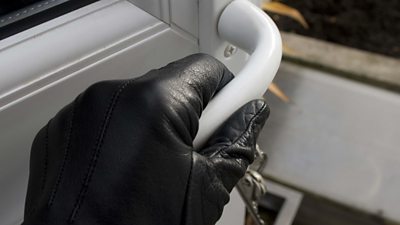
Security (Personal)
Measures you can take to help protect yourself -
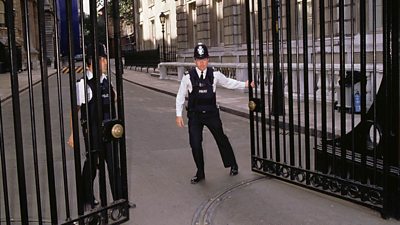
Security (on Location)
Advice for maintaining security on productions -

Covert Filming
A guide to a genre of programmes which involve investigative journalism, surreptitious and covert filming or recording, creating potential personal security risks. -
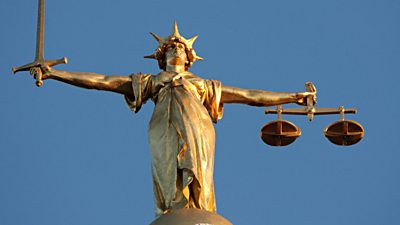
Courts of Law
A guide to working in, outside or, around courts following a news story. -
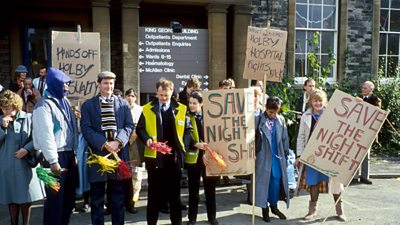
Demonstrations, Protests, and Crowds
91�ȱ� Safety has a whole host of safety guidance to assist teams when they are planning a deployment to a demonstration or protest. -

Door-Stepping
The risks of obtaining an interview, or piece to camera, from a contributor without prior arrangement or agreement. -
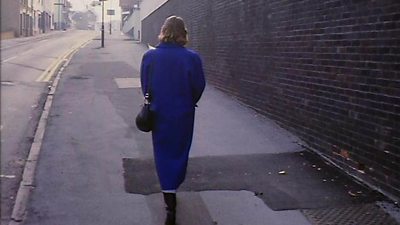
Harassment and Stalking
Guideline to harassment and stalking, including internet / social media trolling. -
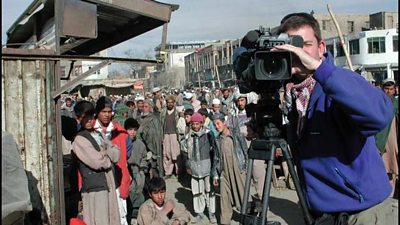
Lone Working
This Guideline sets out the hazards and precautions to be considered when lone working, whether it is in the office, on location or overseas. -
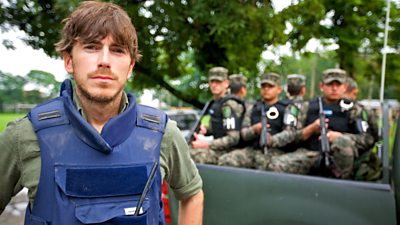
Security on Location
Guideline provides measures to help mitigate the security threats associated with production activities on location, including door-stepping, covert filming, working with crowds and public order issues. -

Violence and aggression
Guidance on dealing with violence and aggression
More from SSR
-
Your platform to record accidents, risk assessments, assurance monitoring and inspections
-
Safety Equipment Stores
Just one number to call: 020 3614 5155 -
91�ȱ� Safety Guidelines
An A-Z of 91�ȱ�'s Health and Safety Guidelines -
Safety Advice Line: 0370 411 0464 Email: safety@bbc.co.uk
Events guidance - key links:
- Exhibitions
- General Guidance
- Indoor Location Recce Checklist
- Outdoor Location Recce Checklist
- Major Incidents & Emergency Planning
- Marketing and Promotional
- Noise Exposure
- Planning and Management
- Responsibilities
- Responsibilities Form
- Laser Lighting Effects
- Strobe Lighting
- Temporary Stages and Rostra
Health topics - key links:
- (91�ȱ� network only)
- Contributors Fitness to Participate
- Display Screen Equipment (DSE)
- (91�ȱ� network only)
- First Aid and Welfare on Location
- International Travel - Risks & Health
- Manual Handling
- Mental Health: 91�ȱ�page
- (91�ȱ� network only)
- Personal Health and Wellbeing
- Pregnancy
- Psychological Trauma Support & Trauma Risk Management (TRiM)
- Tiredness and Fatigue
- Travel Health Contacts
91�ȱ� High Risk - key links:
- CBRN and Industrial Spills
- Covert Filming
- Crisis Management and Security Support
- Demonstrations, Protests and Crowds
- Disaster Coverage
- Door Stepping
- (91�ȱ� network only)
- (91�ȱ� network only)
- Public Order
- Safety Equipment Stores
91�ȱ� Journalism - key links:
91�ȱ� Productions - key links:
- Aerial Filming and Airfields
- Animals: Displaying and handling for performance
- Boats: Working on
- Children and Young People
- Driving
- Electrical Equipment and Systems
- First Aid and Welfare on Location
- Food Safety (Cooking and Catering)
- Remote Location Working
- Roads and Streets: Working by
- Security of Productions on Location
- Stunts
- Tiredness and Fatigue
- Unmanned Aerial Systems (UAS aka Drones)
- Vehicles: Recording in, from and around
- Working at Height: Mobile Elevating Work Platforms
- Working at Height: Tower Scaffolds
91�ȱ� Radio - key links:
- (91�ȱ� Network only)
91�ȱ� Security - key links:
91�ȱ� Sport - key links:
About this site
This site describes what the 91�ȱ� does in relation to managing its health, safety and security risks and is intended for those who work directly for the 91�ȱ�.
It is not intended to provide instruction or guidance on how third parties should manage their risks. The 91�ȱ� cannot be held liable for how this information is interpreted or used by third parties, nor provide any assurance that adopting it would provide any measure of legal compliance. More information
Some links on this site are only accessible when connected to the 91�ȱ� network
